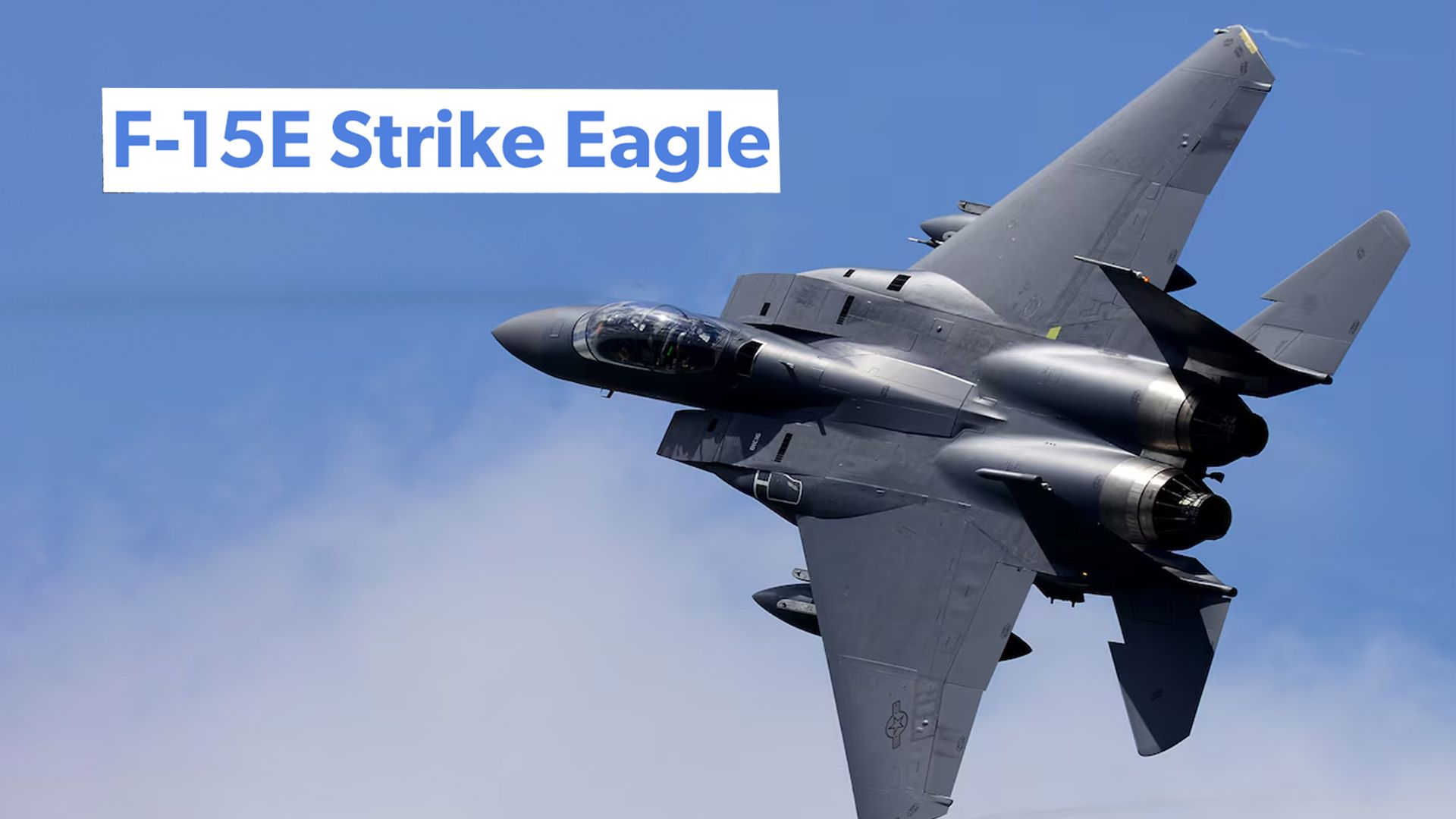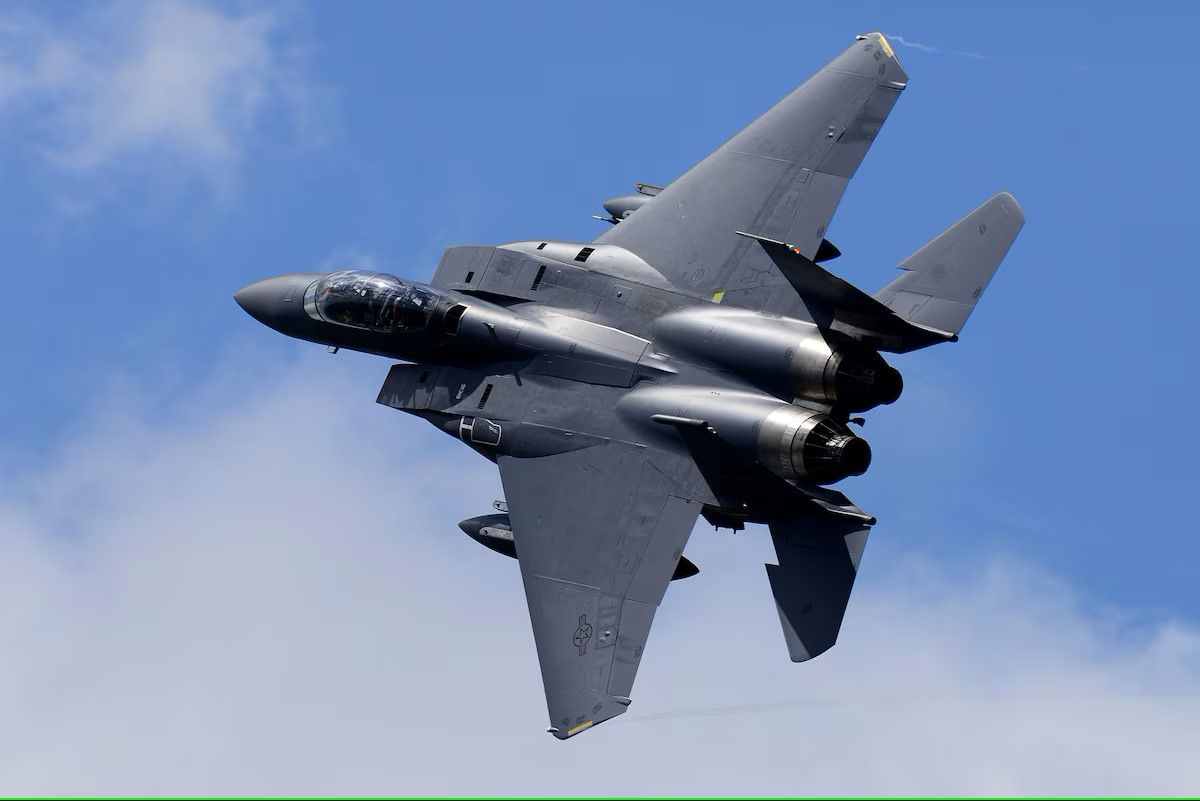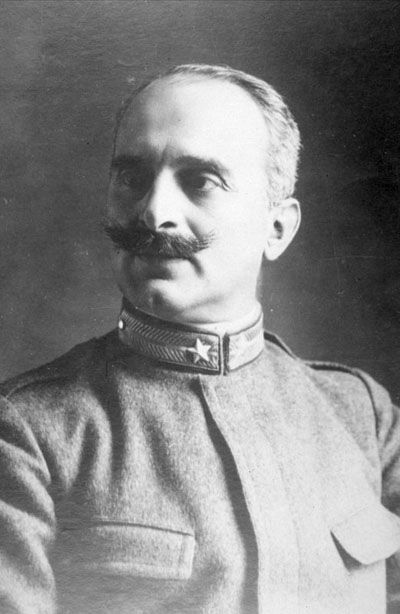In the world of multirole jet fighters, i.e., warbirds that excel in both the air-to-air and the air-to-ground combat roles, the 5th Generation Lockheed Martin “Skunk Works” F-35 Lightning II is the wave of the present and the near future for both the United States and her allies in Europe and the Pacific alike.
In the meantime, however, the 4th Generation McDonnell Douglas (now Boeing) F-15E Strike Eagle is not ready to “go gentle into that good night” just yet. Simple Flying now examines how and why the Strike Eagle is still going strong in air-to-air and air-to-ground missions alike after nearly 40 years.
Where it began
“Strike Eagle, Strike Eagle, they call me by name
I bomb the hell out of Goldwater Range
I fly o’er the mountains, I fly o’er the sea
Ain’t no combat airplane as deadly as me.”
–“Strike Eagle” by Dick Jonas, Lt. Col., USAF (Ret.)
“Goldwater Range” as in Barry M, Goldwater Range (named for the late great former United States Senator [January 2, 1909 – May 29, 1998]), a vast training range for U.S. and allied pilots, consisting of 1.9 million acres of relatively undisturbed Sonoran Desert southwest of Luke AFB between Yuma and Tucson, Arizona.
The Strike Eagle made its maiden flight on December 11, 1986, and was officially introduced into USAF operational service on September 30, 1989; for the basis of comparison, the original single-seater F-15 prototype first flew on July 27, 1972 (thus qualifying it for quinquagenarian status). The F-15E has been affectionately and unofficially nicknamed the “Mudhen,” with “Mud” in reference to its air-to-ground role and darker color scheme and “hen” referencing its fat conformal fuel tanks (CFTs), according to Giantbomb.com.
The warbird was first “blooded” in combat during the 1991 Persian Gulf War, AKA Operation Desert Storm, whose objective was to end then-Iraqi strongman Saddam Hussein’s occupation of the tiny oil-rich state of Kuwait. On the first night of the conflict — January 17, 1991 — 24 F-15Es launched an attack on five fixed Scud ballistic missile installations in western Iraq.
From there, Strike Eagles were used to bomb Iraqi petrol oil and lubricant (POL) facilities as well as enemy airfields; during one particular mission, F-15Es destroyed 18 Iraqi jets on the ground at Tallil Airbase (AKA Imam Ali Airbase) using GBU-12 and CBU-87 munitions.
As for air-to-air combat, though the F-15 Eagle series as a whole has an absolutely unmatched 104:0 aerial kill ratio, the Strike Eagle is responsible for only one of those kills. Simple Flying’s Aaron Spray elaborates:
“On February 14, 1991, ‘Lucky’ became the only US F-15E to achieve an air-to-air victory. The aircraft was piloted by Captain Richard T. Bennett in the engagement with Daniel B. Bakke as the weapon systems operator. Lucky (then a virtually brand-new aircraft) responded to a distress call from Special Forces who were facing three Iraqi Mi-24 Hind helicopter gunships.”
“At the time of the distress call, Lucky was already airborne on a Scud patrol mission. Before detecting the Hinds, the aircraft had to fly through challenging weather and evade anti-aircraft fire. Lucky fired a laser-guided GBU-10 missile at one of the helicopter gunships, disintegrating it in a fireball around 245 meters or 800 feet above the ground. The remaining Iraqi Mi-24 Hinds then retreated, and the Special Forces team was able to withdraw safely.”
Key capabilities and desirable features
So, what keeps the Strike Eagle going strong in spite of the prevalence of the F-35? Well, for one thing, the F-35s — at least the American-owned specimens — continue to be plagued by reports of reliability issues and cost overruns, which rankle the ire of pundits in Congress, the mainstream media, and government watchdog groups like the Project On Government Oversight (POGO) alike; by contrast, the time-honored and battle-proven F-15E doesn’t seem to be generating any such horror stories that I’m aware of.
In addition, the Strike Eagle still packs a greater payload:23,000 lb (10,400 kg) — exceeding that of so-called “heavy bombers” of WWII like the Consolidated B-24 Liberator(!) — vs. 18,000 pounds (8,200 kg) for the Lightning II. for good measure, the F-15E is still superior to the F-35 in terms of max airspeed (Mach 2.5 vs. Mach 1.6 at altitude) and combat range (687 NM [791 mi, 1,272 km] vs. 669 nmi [770 mi, 1,239 km] when configured for air-to-ground missions).
“I totes [sic] more bombs than a B-24
And I laid a couple in Saddam’s backdoor”
–Dick Jonas’s “Strike Eagle” again (2:50 mark)
To quote early 20th century airpower theorist Gen. Giulio Douhet’s dictum “Flexibility is the key to airpower” for the umpteenth time, the sheer variety of air-to-ground ordnance that the Strike Eagle would certainly do Signore Generale Douhet proud:
- Mark 82 bomb
- Mark 84 bomb
- GBU-15
- GBU-10 Paveway II
- GBU-12 Paveway II
- GBU-24 Paveway III
- GBU-27 Paveway III
- GBU-28 (Bunker buster)
- GBU-31 or GBU-38 8 GBU-31s or 16 GBU-38s (JDAM)
- GBU-54 Laser JDAM (LJDAM)
- GBU-39 Small Diameter Bomb (SDB)
- B61 or B83 nuclear bomb
- CBU-87 or CBU-103 (CEM)
- CBU-89 or CBU-104 (GATOR)
- KGGB (Integrated on South Korean Air Force F-15Ks)
- CBU-97 or CBU-105 (SFW)
- CBU-107 Passive Attack Weapon
- BLU-107 Durandal
Next generation Strike Eagle: the F-15EX Eagle II
One good generation of Strike Eagles deserves another, eh? To paraphrase part of JFK’s inauguration speech, “The torch has been passed to a new generation of Mudhens…”
Enter the F-15EX Eagle II, which made its maiden flight on February 2, 2021 — embarking from Lambert International Airport in St. Louis — and officially went operational a mere two months ago. Amongst the upgrades the Eagle II will have in relation to earlier models of the Mudhen, according to Valeria Insinna of Defense News:
- Eagle Passive/Active Warning and Survivability System electronic warfare system
- Digital cockpit
- Advanced Display Core Processor II (ADCP-II) mission computer from Honeywell
- Fly-by-wire flight controls.
Might as well conclude this article with the final two lines of the Dick Jonas song, since they’ve proven to be more than sufficiently prophetic (seeing how I’m typing these words in September 2024):
“Strike Eagle, Strike Eagle, you know what I mean
I’ll still be flying in 2019
Yeah, I’ll still be flying in 2019″



